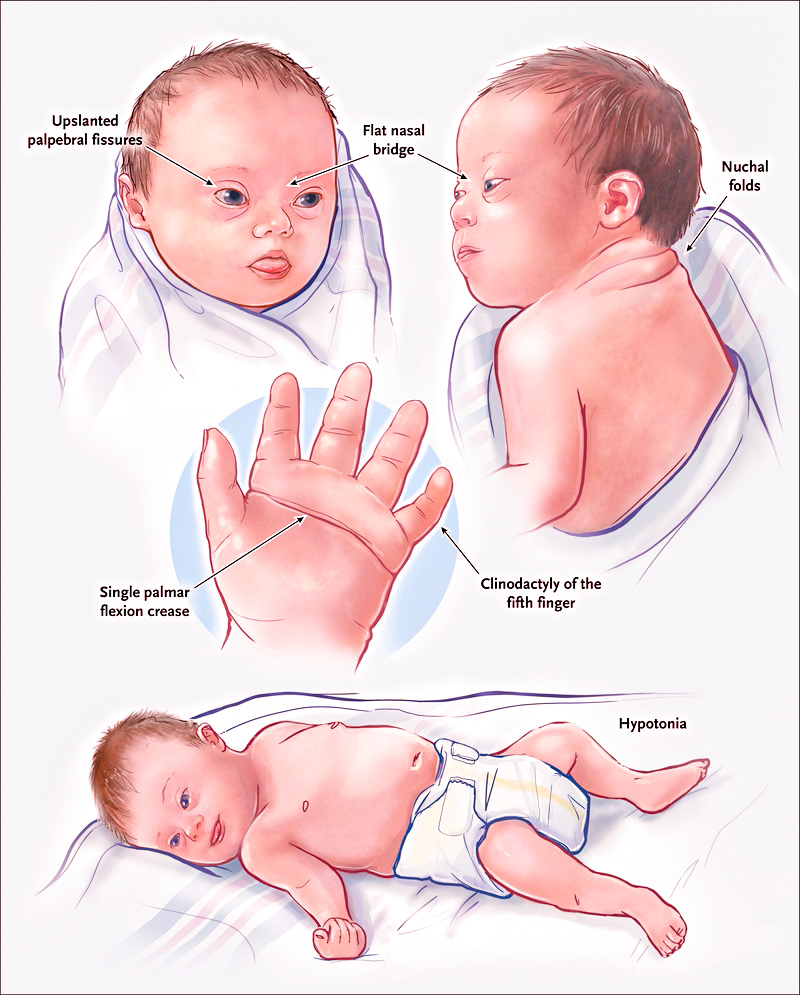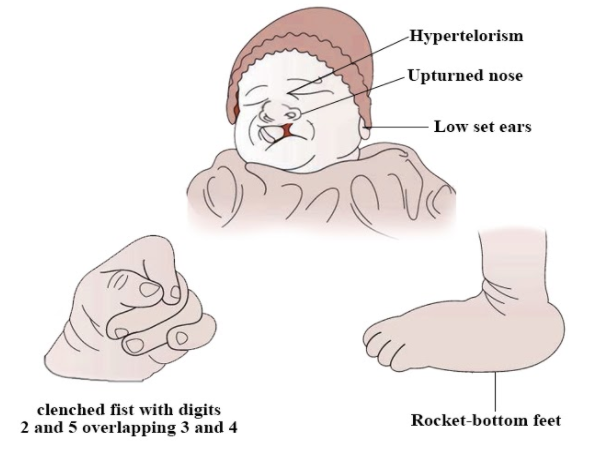
Give two examples of chromosomal disorder showing trisomy.
Answer
493.5k+ views
Hint: A condition where an individual has three copies of X-chromosomes instead of two copies leading to a severe genetic disorder that results in the development of the new abnormal characters in an individual. One of the disorders was discovered by Langdon and the other by John Hilton.
Complete answer:
Trisomy is a genetic disorder as the chromosomal composition of the parents may have an extra X-chromosome. This may occur due to the nondisjunction of the chromosomes at the time of cell division. The trisomic cell is represented as 2n+1 (if one trisomy is present), and 2n+1+1 (if two trisomies are present).
The two Chromosomal disorder showing trisomy
Down’s Syndrome
-It is a genetic disorder where the trisomy is present on chromosome 21. The extra copy of the complete chromosome or the part of the chromosome is present which is responsible for the physical growth of the body. This disorder may result in mental disability and various characteristic facial features.
-The person has a very low IQ level around 50, which is that of the 8 or 9 years old child. The parents of the individual are normal, the nondisjunction of a chromosome has occurred by chance.
Edward’s Syndrome
-It is a genetic disorder where the trisomy is present on chromosome 18. The extra copy of the complete chromosome 18 or the part of the chromosome that is present affects various organs of the boys most importantly the heart. The child may have a mental disability, small head, and jaws with overlapping fingers and clenched fists. It is not generally inherited from the parents instead it occurs at the time of the formation of the reproductive cells.
-The rate of the disorder is 1 in around 5000 children. It was first discovered in 1960 by an English geneticist John Hilton Edwards.
-If the trisomy is present in autosomes, it is called autosomal trisomies and if it is present on the sex chromosome it is known as sex chromosomal trisomies.


Note: Trisomy is differentiated into four types: Full trisomy (it is also called as primary trisomy, where an extra chromosome is present), Partial trisomy (only a part of a chromosome is copied extra), Secondary trisomy (duplicated arms are present on the chromosomes), and tertiary trisomy (copies of arms are present).
Complete answer:
Trisomy is a genetic disorder as the chromosomal composition of the parents may have an extra X-chromosome. This may occur due to the nondisjunction of the chromosomes at the time of cell division. The trisomic cell is represented as 2n+1 (if one trisomy is present), and 2n+1+1 (if two trisomies are present).
The two Chromosomal disorder showing trisomy
Down’s Syndrome
-It is a genetic disorder where the trisomy is present on chromosome 21. The extra copy of the complete chromosome or the part of the chromosome is present which is responsible for the physical growth of the body. This disorder may result in mental disability and various characteristic facial features.
-The person has a very low IQ level around 50, which is that of the 8 or 9 years old child. The parents of the individual are normal, the nondisjunction of a chromosome has occurred by chance.
Edward’s Syndrome
-It is a genetic disorder where the trisomy is present on chromosome 18. The extra copy of the complete chromosome 18 or the part of the chromosome that is present affects various organs of the boys most importantly the heart. The child may have a mental disability, small head, and jaws with overlapping fingers and clenched fists. It is not generally inherited from the parents instead it occurs at the time of the formation of the reproductive cells.
-The rate of the disorder is 1 in around 5000 children. It was first discovered in 1960 by an English geneticist John Hilton Edwards.
-If the trisomy is present in autosomes, it is called autosomal trisomies and if it is present on the sex chromosome it is known as sex chromosomal trisomies.


Note: Trisomy is differentiated into four types: Full trisomy (it is also called as primary trisomy, where an extra chromosome is present), Partial trisomy (only a part of a chromosome is copied extra), Secondary trisomy (duplicated arms are present on the chromosomes), and tertiary trisomy (copies of arms are present).
Recently Updated Pages
The correct geometry and hybridization for XeF4 are class 11 chemistry CBSE

Water softening by Clarks process uses ACalcium bicarbonate class 11 chemistry CBSE

With reference to graphite and diamond which of the class 11 chemistry CBSE

A certain household has consumed 250 units of energy class 11 physics CBSE

The lightest metal known is A beryllium B lithium C class 11 chemistry CBSE

What is the formula mass of the iodine molecule class 11 chemistry CBSE

Trending doubts
State the laws of reflection of light

One Metric ton is equal to kg A 10000 B 1000 C 100 class 11 physics CBSE

Difference Between Prokaryotic Cells and Eukaryotic Cells

How do I convert ms to kmh Give an example class 11 physics CBSE

Describe the effects of the Second World War class 11 social science CBSE

Which of the following methods is suitable for preventing class 11 chemistry CBSE




